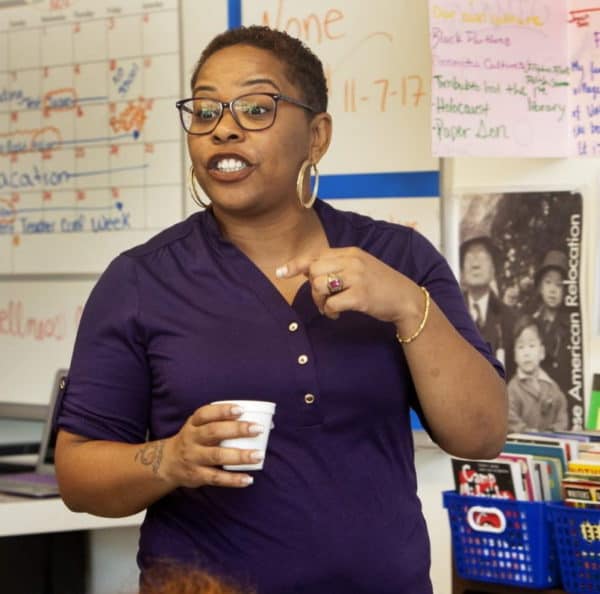Teacher at a Tough School: “I’ve Ended Many School Days Crying in My Car”
Jessica Calefati, CALmatters, December 5, 2017
Why does San Francisco, a hub for technological innovation, struggle to educate its black students?
I examined this question in a recent article for CALmatters — one that has stirred conversations and generated a rebuttal from two of the city’s board of education members who declined my initial requests for interviews. Black families are concentrated in public housing in the city’s Bayview neighborhood, where teachers are more likely to be inexperienced. Across the district, one in five teachers are new, and in Bayview schools, one in three are. The district pointed to that fact as a contributor to black students’ poor academic results.
And that fact has gnawed at me. How do so many new teachers wind up in the most challenging classrooms?
The district tries to convince veteran educators to work in the Bayview and even offers annual bonuses to the ones who say yes. But few do, said district spokeswoman Jessica Qian Wan, who added that the district cannot forcibly assign teachers to any of its schools. Officials from the union representing the city’s educators wouldn’t say why its most experienced members don’t want to work in the Bayview, and they declined to connect me with a teacher for an interview.
San Francisco isn’t the only district where inexperienced teachers work in struggling schools. The pattern is common and it’s a topic I’ll be examining closely over the next several weeks for CALmatters. I want to hear from administrators, educators and parents to get their sense of the problem, and share their ideas about what can and should be done to improve such schools. You can reach me at jessica@calmatters.org or tweet @calefati to share your thoughts.
In the meantime, a San Francisco teacher is helping me understand what it’s like to work in one.
Tachelle Heron is a Bayview resident who has been teaching humanities at Willie L. Brown Middle School since it opened in 2015. This year, only 10 percent of the school’s African-American students passed the state test in reading, and only 2 percent passed math. I had emailed every teacher in the school seeking comment. Heron and I were introduced by staff at Coleman Advocates, one of San Francisco’s oldest community groups, and I met her in her classroom on a recent afternoon to discuss what’s driving those disappointing results.
She is, of course, only one of the district’s more than 3,000 teachers. But her perspective — condensed and lightly edited for clarity — is compelling:
“They put the newest teachers in the Bayview. And those teachers are drowning. They ask me for help all day long. These teachers have no experience working with students in the south side section of San Francisco.
{snip}
And that lead to fights. The other day, we had eight fights in two hours.
Recently, a girl got beat up by a boy right here in my classroom. All she said was, ‘Yo Mama,’ but that boy’s mama had been shot in the face, so it triggered him. He punched her in the head and chest 15 times.
This student is truant. He’s always tardy. And he’s the smartest black boy in the school. He can remember anything. You give him one of your credit cards, he can remember every number, front and back. He has an 11th grade reading level. But those were last year’s numbers. This year…mama got shot in the face, his home was relocated….It’s a wonder this boy and his brother come to school at all.
{snip}

Tachelle Heron, teacher















